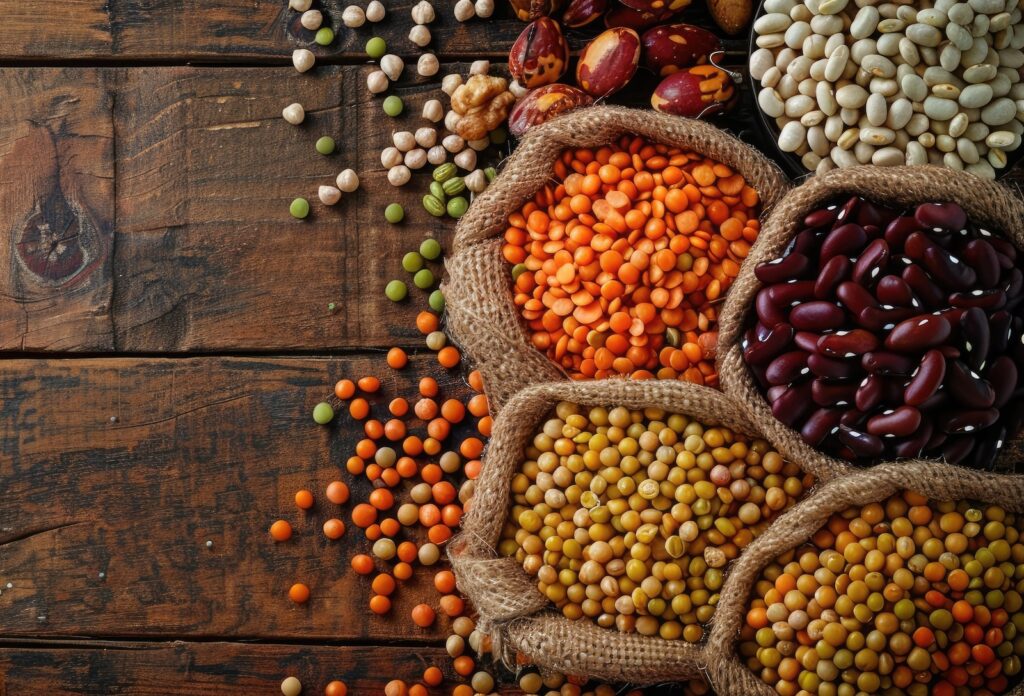You’d be hard pressed to find a culture that does not embrace beans in one way or another.
Fermented black beans and soy are deeply embedded in Asian cuisine. Italian food often incorporates the small white cannellini bean, while Spain and France embrace larger white beans, kidney, and tiny caviar lentils. Beans are an undoubtedly a cornerstone in Latin nations and present at virtually every meal.
But what is the difference between the bean, the legume, and a pulse?
Legumes are plants that bear fruit that grow in pods. Beans are the seed from different varieties of plants, although typically the whole plant is referred to as beans. In other words: all beans are legumes, but legumes aren’t necessarily beans.
Pulses include beans, lentils, and peas. For example, a pea pod is a legume, but the pea inside the pod is a pulse. The entire legume plant is often used in agricultural applications (as cover crops or in livestock feed or fertilizers), while the seeds or pulses are what typically end up on our dinner plates.

It can all easily be confusing. One thing is for certain, they are delicious and packed full of nutrients and are a go to source of protein.
Let’s hear what Stephanie has to say about the many benefits of beans.
I love to recommend beans as nutritionally dense plant-based protein. So many times, we only think about animal proteins, or tofu for plant-based, as good sources of protein. While they may well be good sources, they aren’t the only options out there. And, both options tend to be on the more expensive side to get a high-quality product. I love to introduce people to beans are a nutrient dense, cheap, and high-quality source of protein. Beans as protein source, are low in fat and cholesterol and high in fiber, compared to their animal protein counterpart.
As Kelly mentioned, there are so many different types of beans, and so many forms to eat them and incorporate into meals. One of my favorite ways to use beans is to make them into a dip or spread, such as hummus. You can do this with any type of bean- edamame, white beans, kidney beans, pinto beans, green peas, coral lentils, etc. It’s also fun to include other vegetables and herbs/spices to mix up the flavor, texture, and nutritional profile. As we often say in this column, the sky’s the limit.
If we look at the micronutrient side of beans, they also contain fiber (as mentioned above), B vitamins, copper, magnesium, zinc, manganese, and phosphorus, depending on the type. Best is to include a variety of legumes, beans, and pulses to maximize micronutrient content. We know that the best form of nutrients comes from foods, so try to eat these before reaching for a supplement. This is especially true for the B Vitamins, which are important for athletes, and highly supplemented. You can’t always get everything through food, but you can try to emphasize that first.

When cooking beans, the first thing I do is empty the dried beans in a strainer and rinse with cold water. While rinsing, be sure to pick through and remove any debris that may have hitched a ride during harvesting. It is not uncommon to find rocks, sticks, etc.
If you can presoak your beans before cooking, it will surely cut down on cooking time. Stephanie and I may live on opposite sides of the world, but we both live at a rather high elevation. Sometimes, the only way to successfully cook beans is in a pressure cooker, thus presoaking is not necessary. When I lived in Indiana, or at sea level in Virginia, I always presoaked.
Choose a large pot to cook your beans. A pressure cooker, Instant Pot, crockpot, etc. are also great for preparing beans.
- 1 pound dried beans of your choosing
- 1 medium red onion chopped
- 4 cloves garlic chopped
- 2 Tablespoons olive oil
- 1 Tablespoon salt
- Pinch red pepper flake
- ¼ teaspoon black pepper
- *Water or stock to cook
In a large pot, sauté the onion, garlic, and both peppers in olive oil. Add beans and enough water or stock to cover by about 2 inches. Bring to a full boil for 10 to 15 minutes. Reduce heat to a gentle simmer, using a lid to help regulate the heat, and gently cook until done, 1 to 3 hours. Salt when the beans start to soften.
I often add a parmesan rind and a tablespoon of miso paste before putting the lid on to cook as well. The combination adds a nice earthy umami flavor.
Canned beans are always a favorite as well, and certainly do in a pinch after a long day.
There are far things better than a hot bowl of beans with a solid olive of drizzle and a large end of crusty bread. Throw an egg on top and some greens, and call it perfection.














